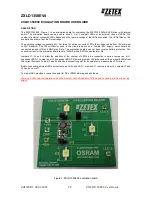
SQ575
9
4.4.4
Boot Sequence
The original IBM PCs loaded the DOS operating system from drive A (floppy disk), so IBM
PC-compatible systems are designed to search for an operating system first on drive A, and
then on drive C (hard disk). However, the BIOS now offers 10 different boot sequence
options of three drives each. In addition to the traditional drives A and C, options include IDE
hard drives D, E, and F; plus a SCSI hard drive and a CD-ROM drive.
4.4.5
Swap Floppy Drive
This field is effective only in systems with two floppy drives. Selecting Enabled assigns
physical drive B to logical drive A, and physical drive A to logical drive B.
4.4.6
Boot Up Floppy Seek
When Enabled, the BIOS tests (seeks) floppy drives to determine whether they have 40 or 80
tracks. Only 360-KB floppy drives have 40 tracks; drives with 720 KB, 1.2 MB, and 1.44 MB
capacity all have 80 tracks. Because very few modern PCs have 40-track floppy drives, we
recommend that you set this field to Disabled to save time.
4.4.7
Boot Up NumLock Status
Toggle between On or Off to control the state of the NumLock key when the system boots.
When toggled On, the numeric keypad generates numbers instead of controlling cursor
operations.
4.4.8
Typematic Rate Setting
When Disabled, the following two items (Typematic Rate and Typematic Delay) are
irrelevant. Keystrokes repeat at a rate determined by the keyboard controller in your system.
When Enabled, you can select a typematic rate and typematic delay.
4.4.9
Typematic Rate (Chars/Sec)
When the typematic rate setting is enabled, you can select a typematic rate (the rate at which
character repeats when you hold down a key) of 6, 8, 10,12, 15, 20, 24 or 30 characters per
second.
4.4.10
Typematic Delay (Msec)
When the typematic rate setting is enabled, you can select a typematic delay (the delay before
key strokes begin to repeat) of 250, 500, 750 or 1000 milliseconds.
4.4.11
Security Option
If you have set a password, select whether the password is required every time the System
boots, or only when you enter Setup.












































